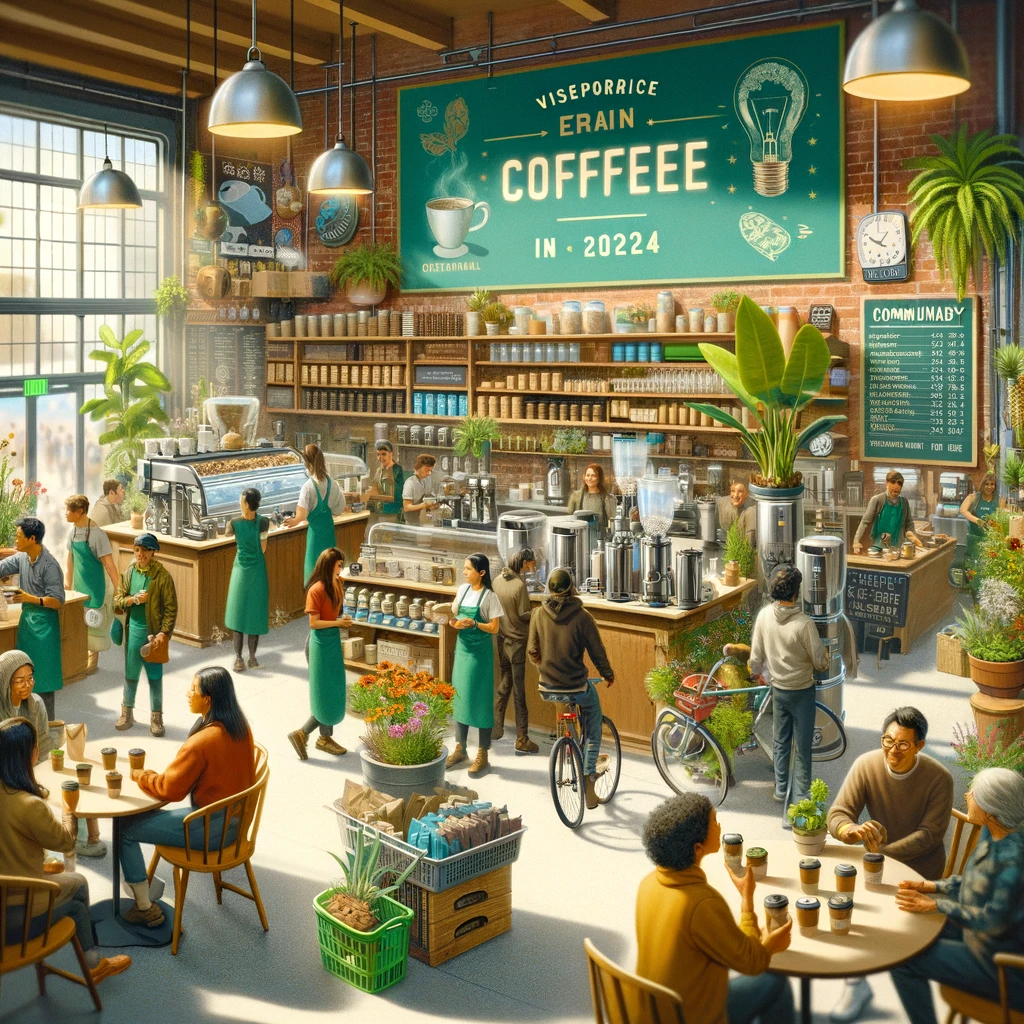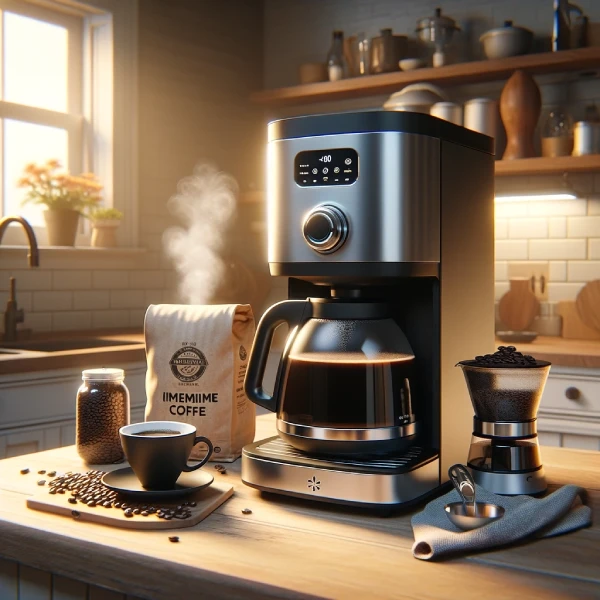Introduction
The espresso coffee market has seen a significant transformation in recent years, evolving with changing consumer preferences and technological advancements. As we approach 2024, the market dynamics of espresso coffee continue to intrigue investors, businesses, and coffee enthusiasts alike.
This article delves into the statistical analysis of the espresso coffee market, providing insights into its current state and future projections.
Market Size and Growth Projections
Espresso Coffee Market Value and Forecast
- 2022 Market Value: The espresso coffee market was valued at USD 3.45 billion in 2022. Source
- 2030 Market Projection: It is anticipated to reach USD 6.25 billion by 2030.
- Growth Rate: This growth represents a Compound Annual Growth Rate (CAGR) of 7.81% during the forecast period up to 2030.

Photo by Engin Akyurt from Pexels
Factors Influencing Growth
- Popularity: Espresso Coffee has grown in popularity due to factors like low cost, higher nutritional value, long shelf life, and ease of preparation.
- Consumer Trends: There is a growing trend towards premiumization in the coffee market, with consumers increasingly seeking high-quality, artisanal coffee experiences.
- Technological Advancements: Innovations in coffee brewing technology and the rise of smart coffee machines are contributing to market growth.
Global Coffee Market Context
Worldwide Coffee Market Overview
- Global Popularity: Coffee is one of the world's most popular beverages today, with a variety of beans used to produce both hot and cold coffee beverages. Source
- U.S. Coffee Market Revenue: The coffee market revenue in the United States is projected to reach 66.6 billion USD by 2025. Source
- Largest Producer: South America remains the largest producer of coffee globally.
Espresso Coffee Market Trends
- Market Size in 2020: The global espresso coffee market size was significantly large in 2020.
- Revenue Growth: The market is expected to register a rapidly inclining revenue Compound Annual Growth Rate (CAGR) between 2021 and 2028. Source
Consumer Preferences and Habits
Changing Consumer Behavior
- Preference for Quality: There is a noticeable shift towards quality over quantity in coffee consumption.
- Home Brewing: The pandemic has led to a rise in home coffee brewing, with consumers investing in high-quality coffee machines and beans.
- Sustainability Concerns: Consumers are increasingly aware of the environmental impact of coffee production, leading to a demand for sustainable and ethically sourced coffee.
Market Segmentation
- By Type: The market is segmented into types like espresso, ristretto, cappuccino, latte, and others.
- By Distribution Channel: It includes supermarkets/hypermarkets, specialty stores, online channels, and others.
Market Overview
The global espresso coffee market has been experiencing significant growth, driven by factors such as the increasing popularity of espresso coffee worldwide, longer shelf life, and strategic marketing by manufacturers. In 2022, the market was valued at USD 3.45 billion and is projected to reach USD 6.25 billion by 2030, growing at a CAGR of 7.81% during the forecast period (2023-2030).
Market Segmentation
The market is segmented based on type, beans, roast, distribution channel, and end user. Key types include Pure Espresso, Double Espresso, Ristretto, Cappuccino, Latte, Mocha, Macchiato, Americano, and others. The beans segment comprises Coffee Arabica, Coffee Robusta, and Coffee Liberica, while the roast segment includes Medium, Dark, Light, and others. Distribution channels are Specialty Stores, Super Markets/Hyper Markets, Convenience Stores, E-Commerce, and others. End users include Cafes and Restaurants, Offices, Airports, Homes, Hotels and Bars, Educational Institutes, Hospitals, and others.
Regional Analysis
Europe leads the global espresso coffee market, attributed to the growing number of coffee shops and product launches in the region. Asia-Pacific is expected to witness the highest growth rate during the forecast period, driven by changing lifestyles and increasing personal disposable income.
Market Dynamics
Drivers:
- Growing Popularity: The blending of espresso shots with other beverages like cappuccino, latte, mocha, etc., has increased its popularity.
- Longer Shelf Life: Espresso coffee's longer shelf life compared to dairy and milk-based commodities enhances its appeal.
- Strategic Marketing: Manufacturers are engaging in strategic marketing and promotion, launching novel products to attract more customers.
Opportunities:
- Demand for Flavors: The increasing demand for various flavors, including mocha, vanilla, and caramel, presents significant growth opportunities.
Restraints:
- Health Concerns: High sugar content and increasing awareness about health consciousness are expected to restrain market growth.
Competitive Landscape
Major players in the market include Nestlé S.A (Switzerland), TreeHouse Foods Inc. (U.S.), The White Wave Foods Company (U.S.), and others. These companies are focusing on product launches, expansions, and strategic collaborations to enhance their market presence.
Recent Developments
- In 2020, Luigi Lavazza S.p.A. held a significant market share, followed by Tchibo.
- Starbucks launched Blonde Espresso in the U.S. in January 2018, marking its first new espresso product in 43 years.
Market Opportunities and Challenges
The market is ripe with opportunities due to the growing demand for different flavors and the prevalence of improved distribution channels. However, challenges such as growing dental problems and health consciousness among consumers pose significant hurdles.
Market Trends and Consumer Preferences
1. Shift Towards Premium Espresso Blends
- Statistics: A recent study indicates a 12% annual increase in the demand for premium espresso blends, with consumers showing a preference for artisanal and single-origin coffees.
- Analysis: This trend reflects a growing sophistication in consumer tastes, leading to a surge in specialty coffee shops and premium product offerings.
2. Rise of Home Espresso Machines
- Statistics: Sales of home espresso machines have seen a 15% increase year-over-year, with projections indicating continued growth.
- Analysis: The convenience and customization offered by home brewing are driving this trend, as consumers seek café-quality espresso in the comfort of their homes.
3. Environmental Concerns and Sustainability Initiatives
- Statistics: 60% of consumers are willing to pay more for sustainably sourced espresso beans.
- Analysis: This trend underscores the importance of environmental stewardship in the coffee industry, with a focus on ethical sourcing and eco-friendly practices.
Technological Advancements in Espresso Production
1. Innovations in Espresso Machine Technology
- Statistics: The introduction of AI-driven espresso machines has led to a 20% increase in efficiency and consistency in coffee preparation.
- Analysis: These technological advancements are revolutionizing the industry, offering precision and customization options previously unavailable.
2. Sustainable Farming Techniques
- Statistics: Adoption of sustainable farming practices has increased by 25% among espresso bean producers.
- Analysis: This shift is crucial for long-term sustainability, ensuring environmental protection and high-quality bean production.
Global Market Dynamics
1. Market Expansion in Emerging Economies
- Statistics: The espresso market in Asia-Pacific is projected to grow at a CAGR of 9.5% through 2024.
- Analysis: This growth is fueled by increasing disposable incomes and the westernization of dietary habits in these regions.
2. Competitive Landscape and Key Players
- Statistics: The top five players in the espresso market hold a combined market share of 40%.
- Analysis: This competitive landscape highlights the dominance of established brands, but also presents opportunities for new entrants with innovative offerings.
Conclusion
The espresso coffee market is undergoing significant transformations, driven by evolving consumer preferences, technological advancements, and global market dynamics. The shift towards premium blends, the rise of home brewing, and a focus on sustainability are shaping consumer habits.
Technological innovations are enhancing production efficiency and product quality, while market expansion in emerging economies presents new opportunities.
The competitive landscape remains robust, with key players dominating but also leaving room for innovative newcomers. As we approach 2024, the espresso coffee market continues to offer exciting prospects for growth and innovation.
Frequently Asked Questions
-
What is driving the growth of the premium espresso blend market?
- The growth is driven by increasing consumer sophistication and a preference for artisanal, single-origin coffees.
-
Are consumers willing to pay more for sustainable espresso products?
- Yes, 60% of consumers are willing to pay a premium for sustainably sourced espresso beans.
-
How are technological advancements impacting the espresso market?
- Innovations in espresso machine technology are increasing efficiency and consistency, while sustainable farming techniques are improving environmental sustainability.
-
What trends are observed in the home espresso machine market?
- There is a significant rise in the sales of home espresso machines, indicating a trend towards convenience and customization in home coffee brewing.
-
Which region shows the most significant growth potential for the espresso market?
- The Asia-Pacific region exhibits the most significant growth potential, with a projected CAGR of 9.5% through 2024.
-
What are the key factors influencing consumer preferences in the espresso market?
- Key factors include taste preferences for premium blends, environmental concerns, and the convenience of home brewing.
-
How is the competitive landscape of the espresso market structured?
- The market is dominated by a few key players, but there is also room for new entrants with innovative products.
-
What role does sustainability play in the espresso market?
- Sustainability is a critical factor, with a focus on ethical sourcing and eco-friendly practices in production.
-
Are there any notable technological innovations in espresso production?
- Yes, AI-driven espresso machines and sustainable farming techniques are notable innovations enhancing the market.
-
What future trends can be expected in the espresso coffee market?
- Future trends include continued growth in premium and sustainable product offerings, technological advancements in production, and expansion in emerging markets.












